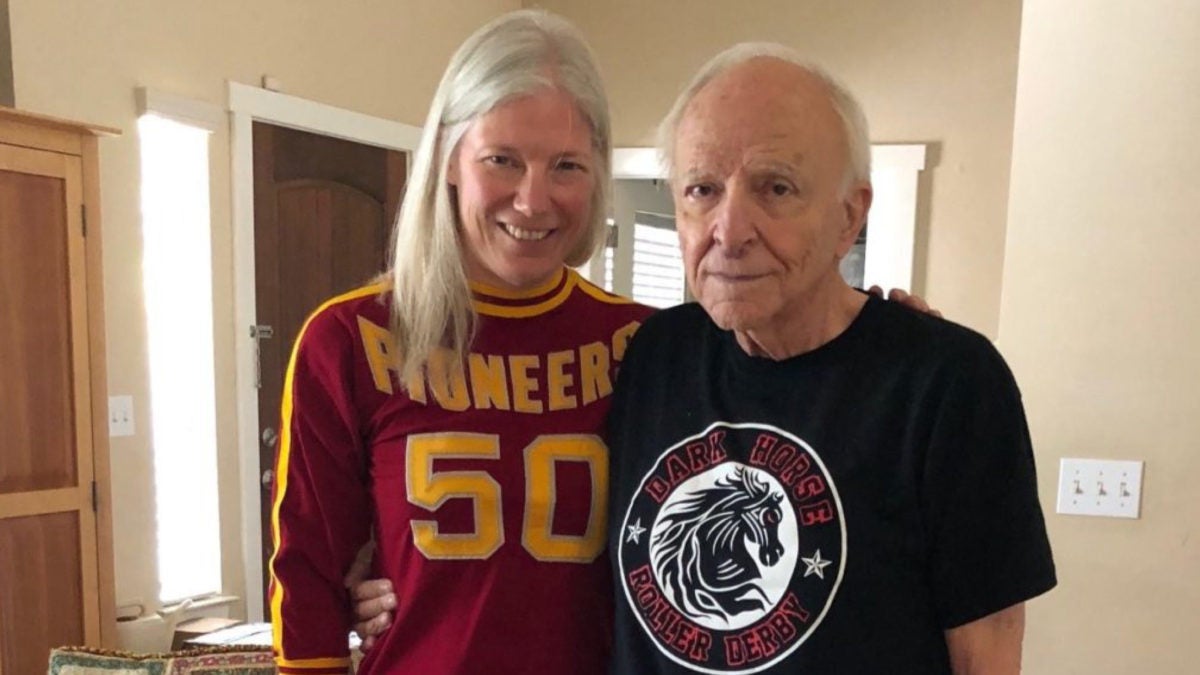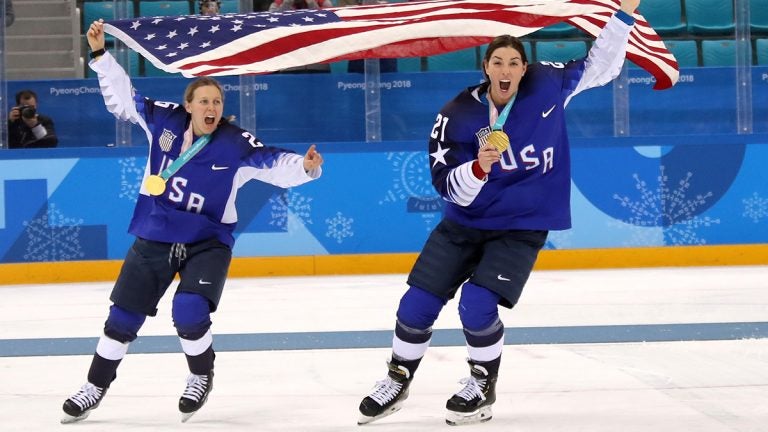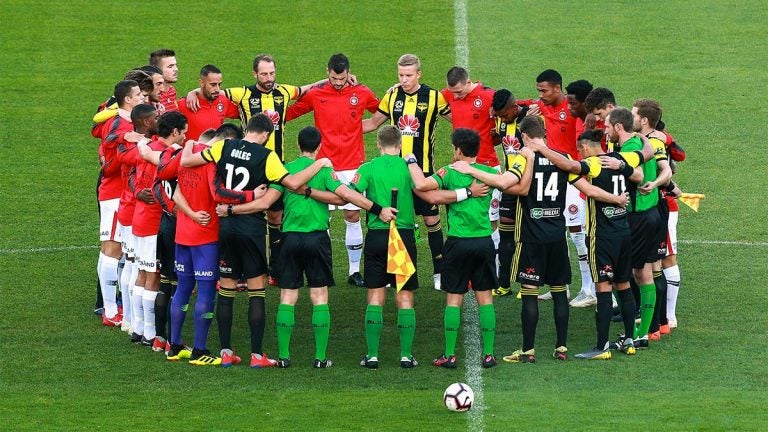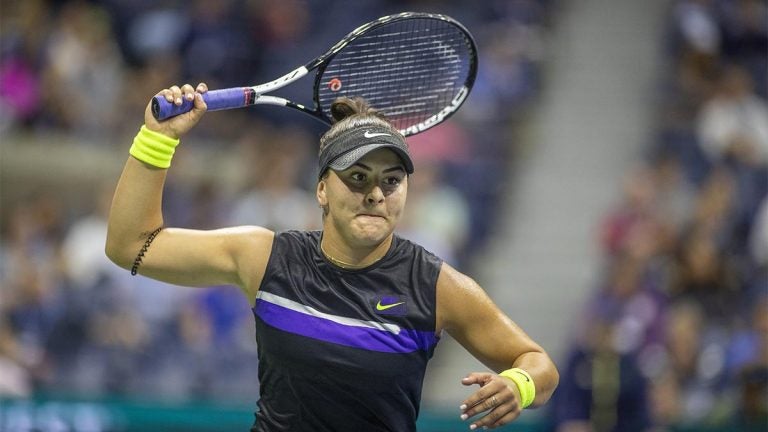Roller derby in a pandemic
Why this matters
While sports with large cash reserves might stand the test of COVID-19, how will smaller more community-supported leagues and teams make it through this rough patch?
In the early evening, if the temperature drops below 100, I go outside of our Phoenix home to our little driveway and do figure-8s on my roller skates. This sounds like something a child would do. I’m a 53-year-old English professor on a banked-track roller derby team. These are strange times.
You could call it pandemic-inspired creativity or just plain desperation. I put on my helmet, wrist guards, elbow pads, and knee pads. I sanitize my hands, then put in my mouth guard. I try to work up some speed, to stretch my legs, to “get lower.” That’s the universal goal in the world of roller derby, because it makes you harder to knock over.
Most nights, it’s hard for me to imagine wanting to get any lower, because I’m already in low spirits. Before the coronavirus, roller skating was a reliable mood improver. It still works now, unless I start to think too hard, whether about big things, like mass illness and death, or little things, like whether I’ll ever play roller derby again.
Roller derby, like most sports, is at a standstill as I write this. Hundreds of leagues worldwide are on hiatus. I’m proud of the ways that derby leadership of all kinds—for my local league, and on the international scene—is being careful and creative at the same time. Both approaches are desperately needed now, for the sport to continue.
Some of the troubles are financial. Most roller derby leagues are non-profit, skater-run, and community-based and don’t carry huge cash reserves. They’re funded by dues-paying skaters, and, if they’re lucky, by a few sponsors, ticketed admissions, or event concessions. I fear some leagues won’t make it out of this.
I know teammates who’ve recently lost jobs and health insurance, struggling with the risk of getting back on skates, not to mention the risk of infection. But beyond that, if a number of a league’s skaters are unemployed, then they can’t pay dues. Most leagues, paying rent to someone, must be behind on payments. Exactly how high would skater dues have to go—for those who still have an income and could pay them—in order for a league to make rent?
The most pressing question may be, “Can you even play pandemic roller derby?” The game is played five on five, on an oval-shaped track, in minute-long bursts called jams. We yell things out on the track, to direct play. It’s got to be worse than a choir practice for the production of aerosolized droplets. “Droplets” is far too dainty a word. Playing roller derby generates full-on globules of spit and sweat. We’re right up in each other’s faces, up in each other’s— everything.
If football comes back—when football comes back?—it will probably be because a lot of money has been poured into new gear, protocols, testing, and contact tracing. If roller derby comes back—when roller derby comes back?—it will be on a wing and a prayer, with few resources behind it, other than love of our off-the-wall derby community and the game itself.
A year ago, I thought I was done playing roller derby. I’d discovered the sport in middle age and competed for five years in flat-track play. The sport was a revelation, helping me to regain my sense of my body as my own again, after two pregnancies and years of breastfeeding. Derby helped me become stronger physically and gave me the gift of connection to a community of strong, inspiring women and non-binary skaters.
Then, for a number of reasons, I stopped playing four years ago. I kept skating, mostly by myself in the early mornings at the local megachurch’s roller rink. I also became faculty adviser to ASU’s amazing co-ed, flat-track collegiate team, the Derby Devils. But I stopped scrimmaging with teammates. I stopped bouting—competing with a team—against opponents, in front of a crowd.
I had good reasons. We were raising two tween sons, playing sports, who needed rides to practices and who deserved a parent-fan at their games, rather than being dragged along to mine. When my husband received a harrowing cancer diagnosis, I spent weeks with him in the hospital. Even after he was discharged, running our household and holding down a full-time job were more important than playing a sport.
“The family can’t afford for me to risk injury now,” I told myself, which was true enough. Derby was the optional thing that could go.
Fortunately, my husband recovered. Our kids grew into full-on teens who didn’t want me around so much. I even got a roller derby research and writing project off the ground, thanks to ASU’s Global Sport Institute. It allowed me to travel to Sonoma, CA, to interview the late Jerry Seltzer, a man who jokingly styled himself “Roller Derby Jesus,” because he was the son of the creator-god of the sport, Leo Seltzer, who got it all started in 1935.
Two summers ago, I had the privilege of talking derby with Jerry for three days straight, that is, as long as Jerry could talk. He was physically fragile, often gasping for air, and carrying an oxygen tank. When he had the energy, he told me about his work fostering the sport during its first televised decades. He was roller derby’s impresario during a phase when its outcomes were fixed and the sport was run as a small family business, albeit one that could sell out Madison Square Garden.
Although Jerry largely left the sport behind in 1973, he loved its twenty-first-century reboot, with its legitimate rules and mostly flat-track play, despite his preference for the banked-track version of the game. He talked about not wanting to see the sport die again, as it had, more or less, from the mid-1970s until the early 2000s, with its revival in Texas as a DIY, community-based, women’s and genderqueer sport.
Interviewing Jerry was moving to me. His stories were often difficult, humble, and humbling. I look forward to telling the rest of the world in years to come about everything I learned from him. But the moment I remember best from my visit is when Jerry got out an extra pair of roller skates he had in a closet and an old 1970s derby jersey, number 50 from the Midwest Pioneers. It was made from this seemingly indestructible polyester. He insisted that I try it on. It fit perfectly.
“Put the skates on, too,” he told me.
I admit I was a little nervous, on wheels in front of him. I skated around the hardwood floor of his living room, trying to interview him and worrying that I might accidentally knock over the television. Although I couldn’t take notes, it put both of us in a good mood. Jerry spent countless hours of his life watching skaters, and I was entertaining him.
He also knew how to put on a good show. While I was there, his generous ex-daughter-in-law (“It’s complicated”) made us lovely meals. When my visit ended, Jerry gave me the Pioneers jersey as a gift. Although we talked on the phone after that, as his breathing allowed, we never saw each other again.
Jerry Seltzer’s death, on July 1, 2019, was an incredibly sad moment for all who love the sport and its checkered, colorful history. It was also a wake-up call for me personally. I missed hitting other women on skates, being on a team, the ear-splitting ref whistles, the penalty box. I missed it a lot more than I’d admitted to myself, before I’d skated around Jerry’s living room and thought about the long, messy history of the sport and the shorter, messy lives of individual athletes.
At Jerry’s suggestion, I looked up Phoenix’s banked-track league, the Arizona Derby Dames, and discovered that it had try-outs just twice a year. I’d known for months that tryouts would be held on the morning of February 5, 2020, but I didn’t acknowledge to myself that I was actually going to go until an hour before it started. I took my gear out of the closet and informed my husband where I was headed.
“I might not make it past try-outs,” I said, “But I’m trying.”
Thirty-two hopeful skaters showed up at the rink, Great Skate in Glendale, Arizona, that morning. We checked in, paid a fee to offset the cost of renting the facility, signed waivers, and geared up. Members of the Arizona Derby Dames team, carrying clipboards with checklists, put us through the paces: t-stops, plow stops, one-knee falls, two-knee falls, crossovers, backward skating. They evaluated us for two hours. Then they announced that just twelve of the 32 skaters had made it onto the team.
I was one of the lucky twelve. In late February, I started what was supposed to be 22 weeks of required “Fresh Meat” training, in the hope of eventually being skilled enough to get drafted onto one of the league’s five intramural teams. For a month, I went to the glorious Hall of Dames warehouse, twice a week, for banked-track practices. Then coronavirus happened.
In the months since, the league’s trainer, Sissy Skatesick, has met regularly with us newbie-skaters on Zoom. She’s been incredible, trying to help us keep derby-fit. We do squats and crunches in our bedrooms or on our patios, and she directs us and cheers us on. We also have regular meetings with coaches and refs, going over old videos of banked-track play, talking strategy and learning the rules.
At first, like most of us, I found Zoom so inadequate. I missed seeing my new team in person, and I missed learning how to skate the banked track. Now practices on Zoom seem like a lifeline. Going over old videos is proving a great way to use our time, preparing for whatever it is that might come next for us as individuals, for the AZDD league, and for the sport as a whole, in all of its many varieties.
When I’m not at practices, or in my driveway, or doing my job from home, I follow calls from the larger derby community on social media, including Team Indigenous Rising, Queer Skate Alliance, Team Black Diaspora, and the League of Accomplices. Many conversation-leading teams and groups are asking the derbyverse (as we call it) to use this moment, while the sport is on pause, to seek better anti-racist ways forward. Twenty-first century derby has prided itself on its gender inclusivity, but it hasn’t always done enough or done well enough on other axes of difference.
As I write this, the state of Arizona, having re-opened too soon, has now partially reclosed. AZDD’s Hall of Dames, our banked track—one of the few in the country--remains closed, with the league on hiatus. I know the league’s leadership is fighting for the organization to regroup and survive, while also struggling to figure out how to “come back” safely. League officers are paying close attention to every directive from the CDC. They’re in contact with other roller derby leagues across the world, sharing information. There aren’t clear answers.
My new league has been sending out regular surveys to its one hundred or so skaters, taking our collective pulse, as they put it. They’ve been asking us whether and how we’d feel comfortable returning to the track. They’ve just restarted our dues. Behind-the-scenes skater-chatter is all about when we’ll skate together again, whether we’ll wear masks, especially when it’s 110 degrees outside, and we’re skating in a warehouse with no air conditioning.
The first practices back, we’re told, whenever they might happen, will include no physical contact. The old space needs to be reconfigured. There will probably be just ten skaters allowed in at a time. Most roller derby teams consist of fifteen to twenty skaters, plus coaches, but eventually, some sort of “coming back” looks like it will happen, even if it means that teams are split in two for practices. This is not ideal, but few of us seem to be thinking at this point about what’s ideal. What’s safe and what’s possible are driving the conversation.
I ask myself, daily, “Will I go back to the track?” There’s an at-risk person living in our household. How much do I love roller derby? Or rather, just how much do I love it, compared to other people, activities, and things that I love? There’s no CDC guideline for that.
I’ve been incredibly fortunate to spend the first months of the pandemic cooped up at home, working for ASU and parenting. I spend most of my time sitting at my desk, or cleaning, and losing muscle by the day, yet parts of my body look as if I’m still playing a contact sport. One problem with having played roller derby is that you tend to forget you’re not playing roller derby. I still have bruises, for no good reason.
Five years ago, when I was last competing on a team, I’d try to identify where each of my bruises came from. I took a warped pride in their origins. “That one came from playing dodge ball on skates, after practice, when I hit my elbow.” “That one’s from when Blondie Knocks hit me so hard that we both took a wall.” These bruises I could almost celebrate, even the dumb ones. They were wounds of competition, training, and camaraderie.
My pandemic bruises feel so useless, by comparison. I seem to be bumping into things in our house so often, without any purpose or pleasure—going around a corner, ramming into a chair. I move too fast or not fast enough. I sorely miss the teammates I used to skate with. My pointless bruises seem to be telling me something about what I’m meant to be doing now, physically. I’m a person who ought to be bumping into things deliberately, not just by accident.
The bruises are part of what has so far helped me to decide to keep up those inadequate little figure 8s in the driveway. A global health crisis has stopped so many of us from coming together to be a part of the sports that we’ve chosen, for good reason. I believe in public health, and I’ll keep my aerosolized globules of sweat to myself as long as I have to.
Yet I’m more convinced than ever that going through the motions remains important, even if it’s confined to ridiculous little turns on wheels, over cracked pieces of flaming-hot concrete in front of our house. I have to believe that there’s more roller derby history to be made and that, somehow, we’ll each be able to do our small parts to ensure its survival.
Monthly Issue
COVID-19 & Sport
COVID-19 is the rival no one in sport could game plan for. As many live events remain at a standstill and the world keeps adapting, how is sport resetting upon its staggered returns?





